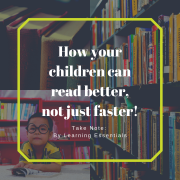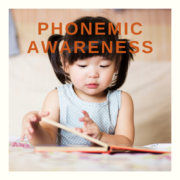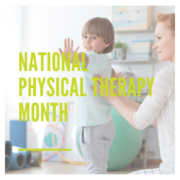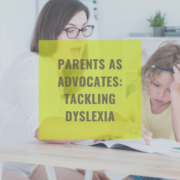Phonemic Awareness Pt. II
Phonemic awareness, which many experts say should be mastered before first grade, is just the first layer when introducing a child to reading. While the terms sound very similar, moving from phonemic awareness to phonics instruction is actually a rather involved leap. A child who has mastered phonemic awareness is able to understand that sounds are represented by letters in the alphabet, whereas phonics is more complex. It requires the reader’s knowledge of blending those sounds together to form syllables within words.
Closed Syllables
Closed syllables are the most common form of English syllables—over 50% of all syllables in the English language are closed. But what does this mean? A closed syllable is a syllable with one vowel—typically a short vowel sound—followed by one or more consonants. Examples of one-syllable words that fall into this category include:
- Cup
- Cat
- Bet
- Dot
- Sin
- Log
This is by no means an extensive list; however, the point of starting with examples of closed syllables is to familiarize children with short vowel sounds and the patterns of letters that consistently create those sounds. When children move on to look at multisyllabic words, the same rules apply for those syllables. Take the word napkin. It is comprised of two syllables, nap and kin, both of which include a single, short-vowel, followed by a consonant. Other examples to introduce multisyllabic words with short vowel sounds include:
- Magnet
- Submit
- Content
- Epic
- Picnic
- Sandwich
Non-examples, where the syllable is open, meaning that the vowel phoneme is not “closed in” by a consonant, include:
- Ta ble (table)
- Ba by (baby)
- Fro zen (frozen)
- Pro test (protest)
- Ho tel (hotel)
Syllable Segmentation
In order for children to identify how words are made up of different sounds (or phonemes), we must help them to explicitly hear the different components or syllables within those words. We are likely familiar with the “clapping” method, in which educators model how to “chunk” words into their separate sounds (syllables) by clapping for each syllable. For example, clapping out the syllables for people’s names would look like this:
- Sarah = Sa-rah (2 claps)
- Bethenny = Be-then-ny (3 claps)
- Jake = (1 clap)
- Felicity = Fel-i-ci-ty (4 claps)
Another option for syllable segmentation involves the use of an abacus, a tool that is typically used for counting and other math skills. Children will slide a bead to the other side for every syllable they hear in the word. Some reading programs suggest a strategy similar to clapping, in which students “tap” or “finger stretch” the syllables in a word. Either way, the process should begin as an auditory practice—no written words or word cards are necessary in this stage. You really are asking children to simply hear the phonemes before they delve into written words.
Hear the difference: Vowel Phonemes
Short vowel phonemes are introduced organically when children learn about closed syllables. However, the long vowel phonemes are another story altogether; they follow a myriad of different rules when combined with other letters. This is partly what makes the English language so complex! Stay tuned for part III!












